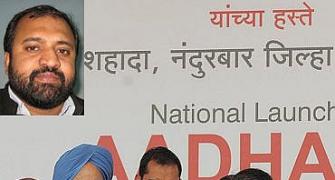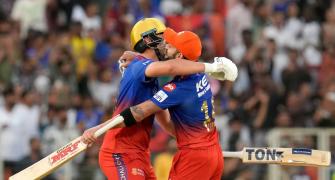India is moving out of the teens this year. We complete twenty years of liberalisation. The 25-year-old today grew in the era of economic liberalisation - the 1990s. The 25-year-old in five years time would have been born into the era. This demographic shift could have serious implications for marketers and provide them with opportunity to change gears.
The 25-year-old in five years time would have been born into the era. This demographic shift could have serious implications for marketers and provide them with opportunity to change gears.
It's worthwhile to see what some of the changes are that could happen in terms of both - profile of consumers being marketed to and their outlook to marketing communications.
It's known that India will continue to be young unlike our European and Japanese counterparts.
And the technology boom will continue and extend beyond the large towns into the interiors making new media clearly an optional channel of communication for marketers and brands.
So, what will the consumer of the next decade look like and what's the implication for branding?
First, a new version of two Indias will emerge. If the past two decades saw the emergence of urban and rural India - one media rich, the other media deficient; one driven by indulgence and the other by constraints - in the next decade, north and south India could become two distinct markets.
This could be beyond the cultural divide already recognised by marketers and marketing mixes. The double hump of new India will be defined by ages.
According to Nandan Nilekani: "by 2025, north India's population will be very young with a median age of just twenty six; but the median age in south India would be 34 - similar to Europe's in the late 1980s".
This could mean marketing to distinct mindsets. The mid-twenties is a period of independence, confidence and experimentation; the mid-thirties is an age of responsibility, reality and more set behaviours.
As marketing moves from penetration to consumption, the implications of this age divide could mean distinct strategies for the two Indias - much the same as marketers have adopted to address the urban rural divide in the past - just that it's going to happen in similar urban markets.
The second change would be the emergence of a smaller size household. Between 1987 and 2007, the number of "single member" and "couples without children" households has grown from 2 and 5 per cent respectively in 1987 to 5 and 11 per cent in 2007.
Migration and urbanisation is going to continue to grow these numbers; and with men and women marrying late and having children even later, the profile of the "moneyed consumption" class is going to see a new significant segment.
The past two decades has seen the shift from joint families to extended nuclear families but these small households (included joint singles - singles living together with a set of shared products and another set of private products) could provide marketers a new opportunity to provide relevant SKUs and brand platforms.
The third change would be the growth of English. It could be tempting to extend the internet into local languages to reach the small town audiences.
However, one needs to recognise the proliferation of English in small town India. There is already a groundswell for English in small town India - nearly one-third of all rural school children are now enrolled in private schools and close to 50 percent of these schools are English medium.
The penetration of English internet will ride on the craze for learning English and the connected growth in English schools.
English communication would become mass! This could then see an opportunity of a counter trend - the return to roots and hence a re-emergence of value in local language.
The fourth change to consider is the new generation's comfort with participation, engagement and interaction.
A recent American study shows that the growth of mobile and the internet has not equivalently reduced the consumer's involvement with traditional media.
The generation has just become better multi-taskers consuming two or three media simultaneously comfortably.
We already see this around us - viewers smsing through mobile with TV programmes. This provides marketing communication to move into engaging people with their stories in traditional media.
If the 1980s and early 1990s were about information and imagery; and the late 1990s and the first decade of 2000 one of entertainment and imagery - then the next frontier would be of engagement and participation.
The fifth opportunity is just a contradiction to the fourth. The time-crunched, short-attention span audience would perhaps have less and less time for brands and their messages.
This is also a generation that is getting more and more visual in communication - pictures, emoticons, etc. The mobile would be the screen the generation is most exposed to.
Its basic size makes visual the strongest way to communicate. "A picture says more than a thousand words"would be true to this audience.
How to tell a brand story with just visuals would be the next challenge for marketing communicators. This could spell the ascent of the visualiser over the copywriter!
The sixth opportunity is again linked to the fourth and fifth. Markets are going to be crowded and quality is going to be commoditised.
Need satisfaction, especially for the urban consumer, is going to be taken for granted. Hence, the next frontier for brands is going to be about inspiring consumers rather than providing just functional and emotional satisfaction.
Given the rise of social consciousness, the emergence of conflicts between materialism and traditional values, "inspiration" would be the next hunting space for brand positioning.
Finally a wild card: As modern trade grows and the man continues to play a greater role at home - lending either a helping hand in daily chores or taking on some of the roles traditionally the woman's including shopping (the modern trade making it easy), the man could become the decisionmaker for some of the household products, traditionally seen as women's domain.
He could be making the brand choice for himself and his children, and in a world where homes are becoming multi-brand in many categories, this could be significant.
We could see target audiences defined as male, 35-45 year old - a far cry from the female, 25-year-old - the norm of the last two decades!
These are just some of the changes around the corner. India in the next decade is not the same as what it was in the last two.
The more we ponder about it, the more we will be prepared to change gears.








